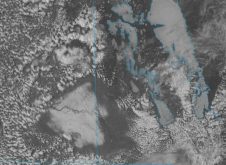The National Oceanic and Atmospheric Administration is trying to figure out what has gone wrong with a key component of its newly launched GOES-17 weather satellite.
The satellite has a high-resolution camera called the Advanced Baseline Imager that monitors things such as cloud formation, ocean dynamics, and vegetative growth. But the cooling system that is an “integral part” of the device is not working properly, said the U.S. scientific agency.
If the camera’s cooling system on the $500-million satellite can’t be fixed, its infrared imaging capability will be greatly reduced. But the agency says other satellites in the GOES network can help fill the gaps.















